Digital Poster
Current Advancements in Contrast Agents
ISMRM & ISMRT Annual Meeting & Exhibition • 10-15 May 2025 • Honolulu, Hawai'i

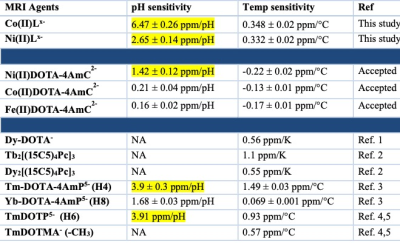 |
Computer Number: 49
3861. Transition
metal based phosphonated macrocyclics for pH biosensing
S. K. Mishra, S. Kurdi, D. Coman, F. Hyder
Yale University, New Haven, United States
Impact: The Co(II)Lx- exhibited
highest pH sensitivity among all reported biosensors. These
biocompatible pH sensors are under evaluation for in vivo pH
mapping, aiming to enable early cancer diagnosis and holding
strong potential for clinical translation.
|
|
 |
Computer Number: 50
3862. CEST
MRI detection of Glycoengineered Extracellular Vesicles
S. Aafreen, K. Dammen-Brower, W. Wang, S. Li, X. Han, T-H
Wang, K. Yarema, G. Liu
Johns Hopkins University School of Medicine, Baltimore, United States
Impact: Leveraging non-natural sugars as CEST MRI agents
equips MGE-EVs with advanced MRI tracking capabilities. This
innovation is poised to accelerate both preclinical
development and clinical translation of more effective
MGE-EV-based drug delivery vectors for a wide variety of
diseases.
|
|
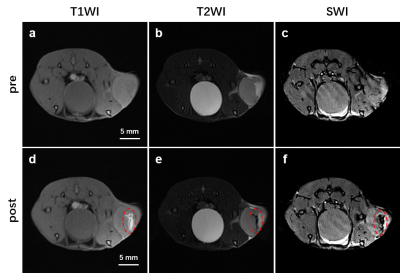 |
Computer Number: 51
3863. Multi-modal
MRI for tumor diagnosis enabled by unfunctionalized 3 nm
ultra-small manganese ferrite nanoparticles (UMFNPs)
S. Yang, W. Deng, D. Gao, Y. Zheng, W. Cui, D. Luo, Z.
Sheng, Z. Liu
National Cancer Center/National Clinical Research Center for Cancer/Cancer Hospital & Shenzhen Hospital, Chinese Academy of Medical Sciences and Peking Union Medical College, Shenzhen, China
Impact: Multi-modal tumor imaging with a single
administration provides more comprehensive information and
will enhance the accuracy and reliability of tumor
diagnosis. This research highlights the potential of 3 nm
UMFNPs as a versatile and powerful tool for MRI-based cancer
diagnostics.
|
|
 |
Computer Number: 52
3864. Magnetic
Resonance Imaging (MRI) to visualise tablet disintegration and
dissolution in the fed stomach
T. Akbar, L. Marciani, P. Gershkovich, S. Stolnik-Trenkic,
J. Butler, K. Stamatopoulos, P. Gowland
University of Nottingham, Nottingham, United Kingdom
Impact: MRI can provide insight into tablet
disintegration and dissolution in the fed stomach. This has
the potential to benefit drug development, by improving
correlation between in
vitro measurements and in
vivo and informing in-silico modelling.
|
|
|
Computer Number:
3865. WITHDRAWN |
||
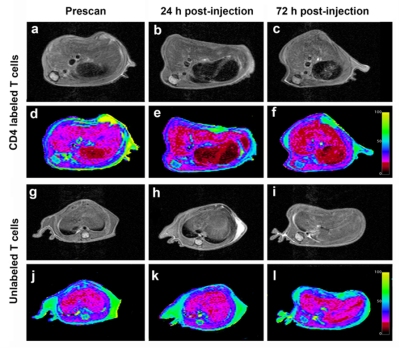 |
Computer Number: 53
3866. Receptor-Mediated
Labeling of CD4 T cells for Longitudinal Tracking of
Distribution Following Systemic Injection in Mouse
Y. Ping, S. Han, B. Howerton, R. Adatorwovor, F. Chapelin
UCSD, San Diego, United States
Impact: The CD4-targeted microbead approach to track
CD4+ T cells in vivo with MRI is safe, specific and
sensitive. This technique will allow rapid assessment of the
efficacy of adoptive cell therapies in conditions such as
transplantation and diabetes.
|
|
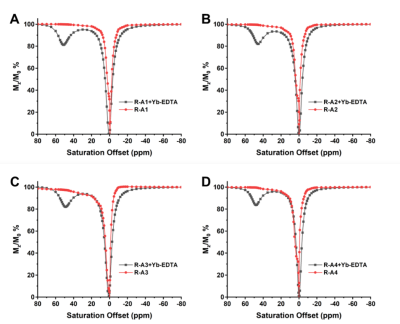 |
Computer Number: 54
3867. Using
Yb-EDTA as Shift reagent for α-hydroxyl acid detection by CEST
NMR
Z. Fang, X. Zhou, Q. Xu, S. Li, L. Zhang, S. Chen
Hainan University, Sanya, China
Impact: The commercially available shift agent Yb-EDTA
was used to detect α-hydroxy acid via the CEST method, with
the signal shifted down to around 50 ppm. This demonstrates
the potential for in vivo detection without interference
from magnetization transfer (MT) effects.
|
|
 |
Computer Number: 55
3868. Extending
the utility of the hypoxia-targeting contrast agent GdDO3NI for
perfusion imaging at 3T.
L. Damodaran, M. Duraiyarasu, S. Mantri, C. C. Quarles, V.
Kodibagkar
Arizona state university, Tempe, United States
Impact: This preclinical study may enable a single MRI
session that simultaneously informs on tumor perfusion and
hypoxia, obviate the need for PET scans for hypoxia imaging
and allow for improving therapeutic strategies tailored to
the hypoxic state of tumors.
|
|
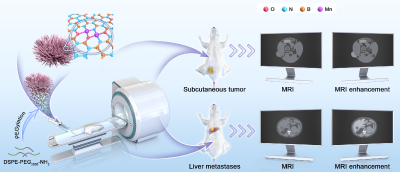 |
Computer Number: 56
3869. Manganese-Based
Single-Atom Contrast Agents with High Magnetic Resonance Imaging
T1-weighted Enhancement for Tumor
D. Yang, Q. Li, J. Liang, H. Zhu, X. Li, Y. Xiao, C-S Lee,
Y. Sun
Peking University Cancer Hospital & Institute, Beijing, China
Impact: The first attempt to apply
manganese-single-atom in MEMRI improves that the
paramagnetic metal-single-atom is the novel and ideal
candidate for MRI contrast agents with charming high
performance, which expand its biomedical application beyond
approved therapeutic functions.
|
|
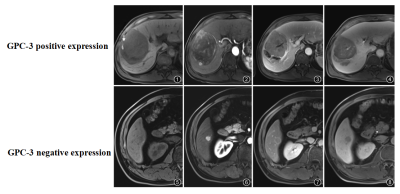 |
Computer Number: 57
3870. A
nomogram based on clinical factors and gadobenate
dimeglumine‑enhanced MRI for prediction of GPC‑3 expression in
hepatocellular carcinoma
M. hui, X. yuchen, L. jiayi, W. di, L. yueming
Department of Radiology, First Affiliated Hospital of Fujian Medical University, , Fuzhou, China
Impact:
Early noninvasive prediction of GPC-3 expression provides guidance for prognosis assessment and tumor treatment. A nomogram based on clinical and gadobenate dimeglumine-enhanced MRI can effectively predict GPC-3 expression in HCC,helping clinicians evaluate prognosis and select appropriate treatments for HCC patients. |
|
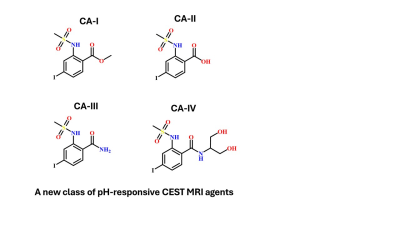 |
Computer Number: 58
3871. Development
of a new class of diamagnetic pH-responsive CEST MRI contrast
agents
P. Patkulkar, S. Panda, S. Noble, S. Jain, A. Sekhar, S.
Sinharay
Indian Institute of Science , Bengaluru, India
Impact: We have incorporated a pH-unresponsive and a
pH-responsive functional group in a small organic molecule
to generate a ratiometric, concentration independent
approach of extracellular pH assessment with CEST methods
without any metal addition to be used for imaging bacterial
infections.
|
|
 |
Computer Number: 59
3872. The
application value of MRI multi-parameters in the differential
diagnosis of solid Solitary Pulmonary Nodule
L. Xiaocui, K. Xuefeng, X. Liming
Huazhong University of Science and Technology, Wuhan, China
Impact: Via comparing various MRI sequences with
associated parameters, it was substantiated that the T2WI,
DWI, and DCE could be applied to diagnose benign and
malignant pulmonary nodules, laying the foundation for
further MRI research and applications in lung cancer.
|
|
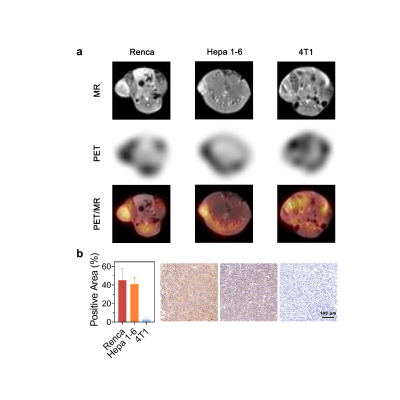 |
Computer Number: 60
3873. 68Ga-NaGdF4-RGD
nanoprobes for PET/MR Dual-Modal Imaging of cancer in Vivo
s. wu, w. li, q. yang, z. chen, y. zou, y. hou, l. kang
China-Japan Friendship Hospital, beijing, China
Impact: This study successfully achieved simultaneous
PET/MR multimodal imaging, which significantly improves the
diagnostic accuracy of tumour. The radioactivity uptake of
can reflect the integrin αvβ3 expression
level of the tumour, and PET/MR is expected to be used for
tumour staging.
|
|
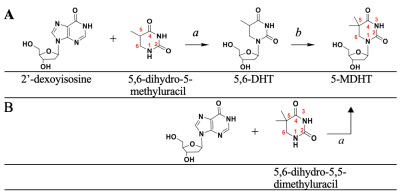 |
Computer Number: 61
3874. First
demonstration of biocatalytic production of MRI contrast agent
A. Al-Hilfi, A. Gilad
Michigan State University, East Lansing , United States
Impact: Simplifying the production of imaging probes
will significantly advance and redirect our understanding of
biological mechanisms, diagnosis, and treatment of human
diseases. Once established, this new approach could be used
to produce many novel imaging probes for specific medical
conditions.
|
The International Society for Magnetic Resonance in Medicine is accredited by the Accreditation Council for Continuing Medical Education to provide continuing medical education for physicians.